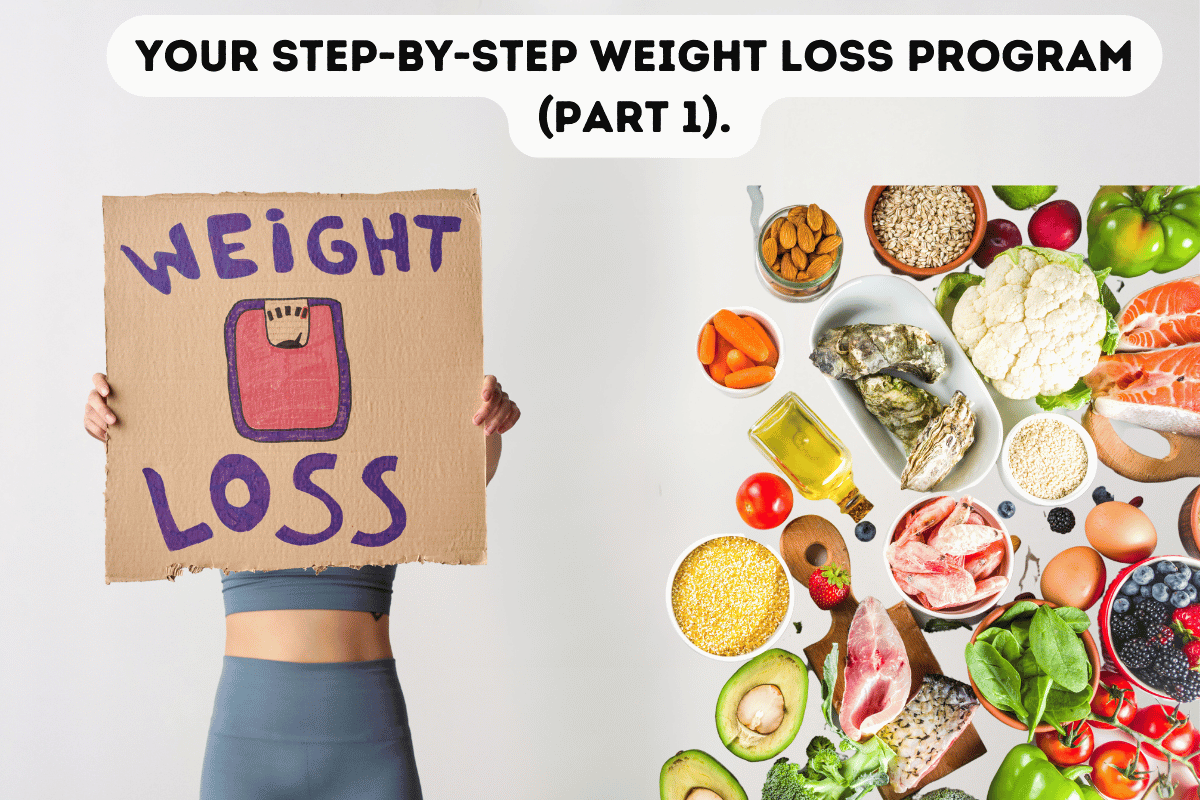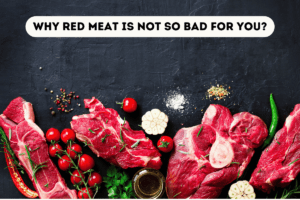Many athletes and fitness professionals are trying to lose weight for performance reasons, to make a competitive weight category or for better health. To get desirable results in weight loss, it is essential to do it properly. If weight loss is too rapid, it can seriously affect health and sports performance. This article will share my knowledge about safe and effective weight loss strategies. In the first part of this article, we will speak about dangers of rapid weight loss, then we will talk about how much carbohydrates, protein, and fat you should eat for weight loss, and in the second part of this article, I will give a step-by-step strategy that you can use for your weight loss program.
The dangers of rapid weight loss on health.
The secret of all diets is a calorie deficit; it is when you burn more energy (calories) than you consume. To do it safely, you must reduce calorie intake not more than 500 kcal a day (or 15-20% of your calories). This will help you to lose 0,5kg per week. Safe weight loss is 0,5 – 1 kg per week. But sometime athletes, trying to achieve necessary weight for competition, or just trying to lose weight more quickly, are using different rapid weight loss techniques. Such techniques include fasting, dehydration, exercising in a sweat suit, saunas, diet pills, laxatives, and even self-induced vomiting. The main goal of fast weight loss is to reduce your calories drastically, and unfortunately, it can adversely affect your performance and even your health.
Rapid weight loss will affect your aerobic and resistance training. Lack of calories, vitamins and minerals will affect your energy levels, strength, and speed. For female athletes, rapid weight loss can create hormonal issues, which can lead to menstrual irregularities and more fragile bones. In male athletes, it can affect testosterone production. Lack of nutrients, hard training sessions and psychological pressure for extreme leanness can even lead some athletes to such eating disorders as anorexia nervosa and bulimia. People who have some sort of disordered eating problem have an intense fear of gaining weight or becoming fat, even if their weight is normal or even below normal.
Also, many rapid weight loss programs are not sustainable and can lead you to such a situation when you manage to lose weight but then you are gaining weight again (sometimes even more than it was before). Then you are going on a weight loss program again, and again you fail. This will happen repeatedly because you can’t always follow your weight loss program, and it is not sustainable. The situation when you are failing your weight loss program repeatedly is called yo-yo dieting and is not healthy for you at all. According to research, repeated weight fluctuations, or yo-yo dieting, have been linked with an increased risk of heart disease, secondary diabetes, gall bladder disease and premature death. Also, yo-yo dieting can give you a sense of failure, which can lower your confidence and self-esteem. So, as you can see, rapid weight loss can lead to different undesirable health problems, and if you don’t want to get them, it is better to follow a proper weight loss program. To make your weight loss more sustainable, you must follow a couple of rules, which we will discuss below.
How much carbohydrate, protein, and fat you should consume for weight loss?
As we discussed, the key to successful body fat loss is achieving a modest negative energy balance by reducing your calorie intake by 15-20%, not more. It will help you to reduce gradually body fat percentage while maintaining lean tissue. If you reduce your calories more than 20%, you will increase the risk of depleting your glycogen stores and not getting enough vitamins and minerals from your diet. Too rapid a drop in calories will signal to the body that you are in a situation with a lack of food. Your body will go into survival mode, trying to adapt to a lower calorie intake, and the rate at which you burn energy will slow down. Because your body needs energy from somewhere, it will start burning your muscle tissue for fuel.
When you reduce calories, you must reduce them mainly from carbohydrates and fat. You need to reduce your carbohydrates by 15%, proportionally to your drop in calories. Ideally, you should consume not less than 4g of carbohydrates on 1kg of body weight (if you still want to maintain your usual training volume and intensity). Of course, this depends on your activity type (More about carbohydrate intake for an athlete can be found in my article: “The importance of carbohydrates for sports performance“). Next, reduce your fat intake to 20-25% (mostly you should eat about 33% of fat). As to protein, you must increase it. Try to consume from 1.8 – 2.7g of protein on 1kg of body weight. The amount of protein also depends on the type of activity.
Before we start with example, we need to understand what basal metabolic rate (BMR) is and how to calculate number of calories your body needs. More about these calculations you can read in my article: “The secret to all diets“. Here, I will try to explain everything shortly. Metabolism is a process by which our body converts food into energy. The metabolic rate is the rate at which the body is burning calories. Basal metabolic rate (BMR) is the amount of energy (calories) your body needs for basic body function like breathing and heart beating. BMR is the amount of energy you need if you lie all day in bed and do nothing. Important to understand that the more muscles you have, the more calories you will burn during rest. That’s why it is important to lose weight without losing muscle tissue. BMR can be calculated using the Schofield equation, which considers age, weight, and gender. An example of the Schofield equation is presented below.
| BMR (Kcals/day) | ||
| Age | BMR male | BMR female |
| 10-17 years | 17.7xW+657 | 13.4xW+692 |
| 18-29 years | 15.1xW+692 | 14.8xW+487 |
| 30-59 years | 11.5xW+873 | 8.3xW+846 |
| 60-74 years | 11.9xW+700 | 9.2xW+687 |
One more important measure is physical activity level (PAL). Pal is a measure of your lifestyle activity and is based on what kind of job and leisure activities you have. Examples of Pal measurements are shown below. To calculate energy expenditure (how much energy our body needs), we need to multiply basal metabolic rate (BMR) on PAL (physical activity level).
| Non occupational activity | Occupational activity | |||||
| Light | Moderate | Heavy | ||||
| M | F | M | F | M | F | |
| Non active | 1.4 | 1.4 | 1.6 | 1.5 | 1.7 | 1.5 |
| Moderately active | 1.5 | 1.5 | 1.7 | 1.6 | 1.8 | 1.6 |
| Very active | 1.6 | 1.6 | 1.8 | 1.7 | 1.9 | 1.7 |
For example, we have a male athlete who is 27 years old, and his body weight is 85 kg. This man non-occupational daily activities are very active (he exercises five days per week in the gym), occupational activity is light, so his PAL number would be 1,6. And let’s say he is doing more resistance training (bodybuilding). According to Schofield’s equation, his BMR = 15,1*85kg+ 692= 1975,5 kcal. The energy expenditure of this man = BMR * Pal =1975,5 kcal (BMR)*1,6 (PAL) = 3180,8 kcal/day. This is the amount of kcal he needs daily to maintain weight. To start losing weight he needs to reduce his calorie intake by 15% = 3180,8 *0,85 = 2703.68 kcal/day (approximately 2704 kcal). Next, we need to calculate necessary amount of carbs, protein, and fat for his weight loss program. For these calculations we need to remember that 1 gram of carbohydrates provides us with 4 kcal, 1 g of protein = 4 kcal and 1 gram of fat = 9 kcal.
Let’s say before his weight loss program, to maintain his weight, this man was eating 5g of carbs on 1kg of body weight (425g). He was eating 1.6g of protein on 1 kg of his body weight (136g). And he was consuming 30% of his calories from fat (105g). Why exactly these amounts, you can look at table below which show you necessary number of macronutrients for sport performance.
| Macronutrients for sport performance | |
| Macronutrient | Daily guideline |
| Carbohydrates | 3-5 g/kg BW for low intensity training days 5-7 g/kg BW for moderate intensity training days (approx. 1h) 6-10 g/kg BW for moderate to high endurance training (approx. 1-3h) 8-12 g/kg BW for high intensity training (>4h) |
| Protein | 0.8 g/kg BW for non-exercisers 1.4-1.6 g/kg BW for endurance training 1.6-2.0 g/kg BW for resistance training 1.8-2.7 g/kg BW for fat loss to preserve muscle tissue |
| Fat | 20-35% of daily energy |
When he decides to lose some weight, he needs to reduce carbs by 15%. Let’s say he will eat the minimum necessary amount of carbs (4g/kg). It will be 4g *85kg = 340g (1360 kcal). He will increase protein to 2.2g on 1kg of body weight (to keep his muscle mass). And it will be 2.2* 85 = 187g of protein (748 kcal). The amount of fat that he needs is 2704 kcal – 1360 (kcal from carbs) – 748 (kcal from protein) = 596 kcal (66g. of fat = 22% of total calories). If he did more endurance training, maybe he would need a little more carbs and less protein. You can always change these numbers a little; just don’t forget the main rules. Don’t reduce the amount of carbs to less than 4g/kg of body weight; protein should range from 1.8-2.7g/kg of body weight. Don’t reduce your fats drastically; you still need 20-25% of fat from your daily calories. The table of required macronutrients for weight management and fat loss is shown below.
| Macronutrient requirements for weight maintenance and weight loss | |||
| Weight maintenance | Weight loss | ||
| 1 | Total daily calories | 3181 kcal | 2704 |
| 2 | Carbohydrate intake | 425g (1700 kcal) | 340g (1360 kcal) |
| 3 | Protein intake | 153g (612kcal) | 187g (748 kcal) |
| 4 | Fat intake | 117g (1053 kcal) | 66g (596 kcal) |
The second part of Your Weight Loss Program can be found here: “Your step-by-step weight loss program (Part 2)”.




